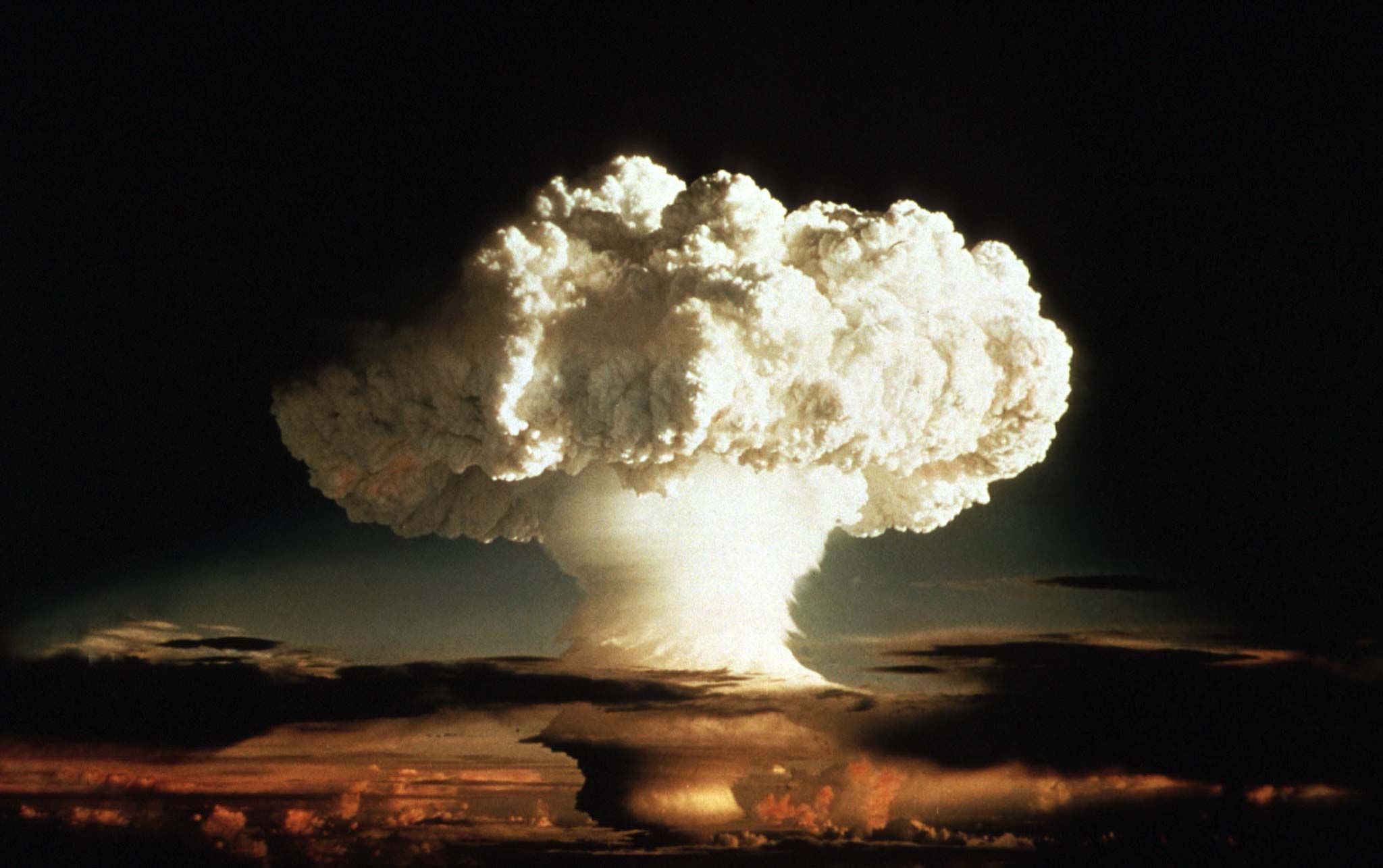
The U.S. government has released hundreds of previously unseen film reels depicting declassified nuclear weapons tests conducted during the Cold War—and one California-based scientific institution has begun uploading them online.
The footage, which a team at the Lawrence Livermore National Laboratory began uploading to YouTube Thursday, includes dozens of videos of the 210 nuclear bombs detonated by the U.S. government from the end of World War II in 1945 to the Cuban Missile Crisis of 1962, a period during which the U.S. was engaged in a nuclear arms race with the Soviet Union. The tests were caught on multiple cameras recording at around 2,400 frames per second, according to the Australian Broadcasting Corporation.
High-speed footage of the impact point in an nuclear airburst test, Operation Teapot, 1955 https://t.co/trUbfeiTU7 https://t.co/F0wv591Pec pic.twitter.com/fnby8yH9AL
— Massimo (@Rainmaker1973) March 16, 2017
The team was led by Lawrence Livermore National Laboratory nuclear weapons physicist Greg Spriggs, who said in a video published to the institution's official YouTube channel that he was able to begin scanning the footage "just in time." The film reels were poorly preserved and the nitrate cellulose that makes up the film was reportedly decomposing, giving off a vinegar-like odor that Spriggs said he smelled as soon as he opened the canisters. The team said it has so far recovered about 6,500 of the 10,000 films believed to exist and, with the help of film expert Jim Moye, has already scanned about 4,200 of them.
In addition to displaying the raw power and "unbelievable" energy released by these weapons of mass destruction, Spriggs, who said he was opposed to the use of nuclear weapons, said the films offered considerable scientific value. Spriggs said he found numerous inconsistencies and errors in the accompanying data published decades ago that was associated with the tests and hoped he could create an accurate analysis for future researchers.
"The legacy I'd like to leave behind is basically a benchmark data that can be used by future weapons physicists," Spriggs said.
Experts have estimated the U.S. nuclear arsenal to possess about 6,970 warheads, second only to Russia, which is believed to have about 7,300 nuclear weapons. Both countries have agreed to limit nuclear proliferation through the 1991 START treaty and the NEW START in 2010. Both President Donald Trump and Russian President Vladimir Putin have expressed the desire to once again bolster their respective nations' nuclear weapons capabilities.
Uncommon Knowledge
Newsweek is committed to challenging conventional wisdom and finding connections in the search for common ground.
Newsweek is committed to challenging conventional wisdom and finding connections in the search for common ground.
About the writer
Based in his hometown of Staten Island, New York City, Tom O'Connor is an award-winning Senior Writer of Foreign Policy ... Read more
To read how Newsweek uses AI as a newsroom tool, Click here.








